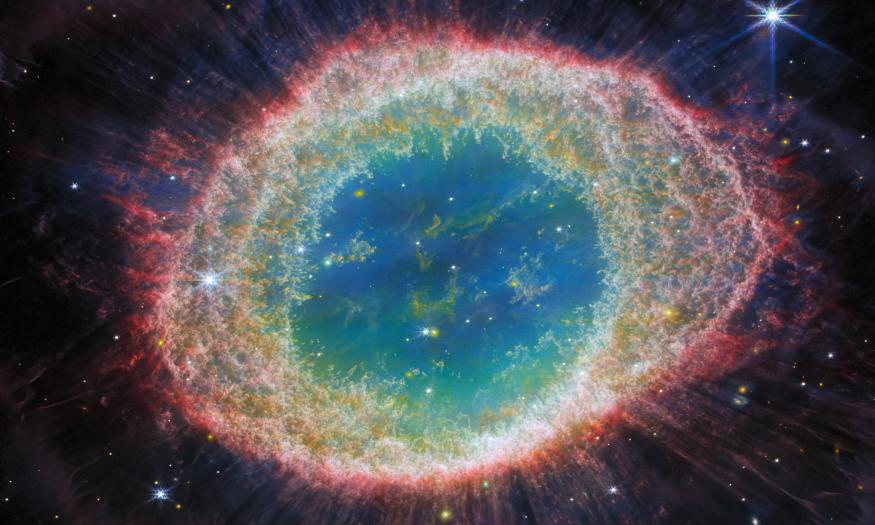Photo: ESA / Webb / NASA / CSA / M. Barlow / N. Cox / R. Wesson
“The gaseous cloud is located approximately 2,500 light years distant from Earth.”
The James Webb Space Telescope (JWST) has recently captured highly detailed images of the Ring Nebula, also known as M57 and NGC 6720. These images, published today, provide a close-up view of the gaseous cloud located approximately 2,500 light years away from Earth. The JWST’s NIRCam (Near InfraRed Camera) was used to take the first image, showcasing the Nebula’s intricate details. The NIRCam is specifically designed to detect near-infrared light and produce remarkably detailed images. Additionally, the JWST’s MIRI (Mid-InfraRed Instrument) captured the second image, emphasizing the nebula’s ten concentric arcs beyond its outer edge. These arcs are believed to have formed through the interaction between the nebula’s central star and a lower-mass companion in its orbit.
The discovery of the Ring Nebula dates back to 1779 when French astronomers Charles Messier and Antoine Darquier de Pellepoix stumbled upon it while searching for comets. Initially mistaken for distant worlds, the Ring Nebula is categorized as a planetary nebula due to its appearance. It originated from a medium-sized star that shed its outer layers as it neared the end of its life cycle and depleted its fuel.
The Ring Nebula’s main ring, filled with vibrant colors, is composed of gas expelled by the dying star at its center. This star is gradually transforming into a white dwarf, which is the final evolutionary stage for a star similar to the Sun. Astronomers study nebulae like the Ring Nebula to gain insights into the star that gave rise to them, providing a form of astronomical archaeology.
